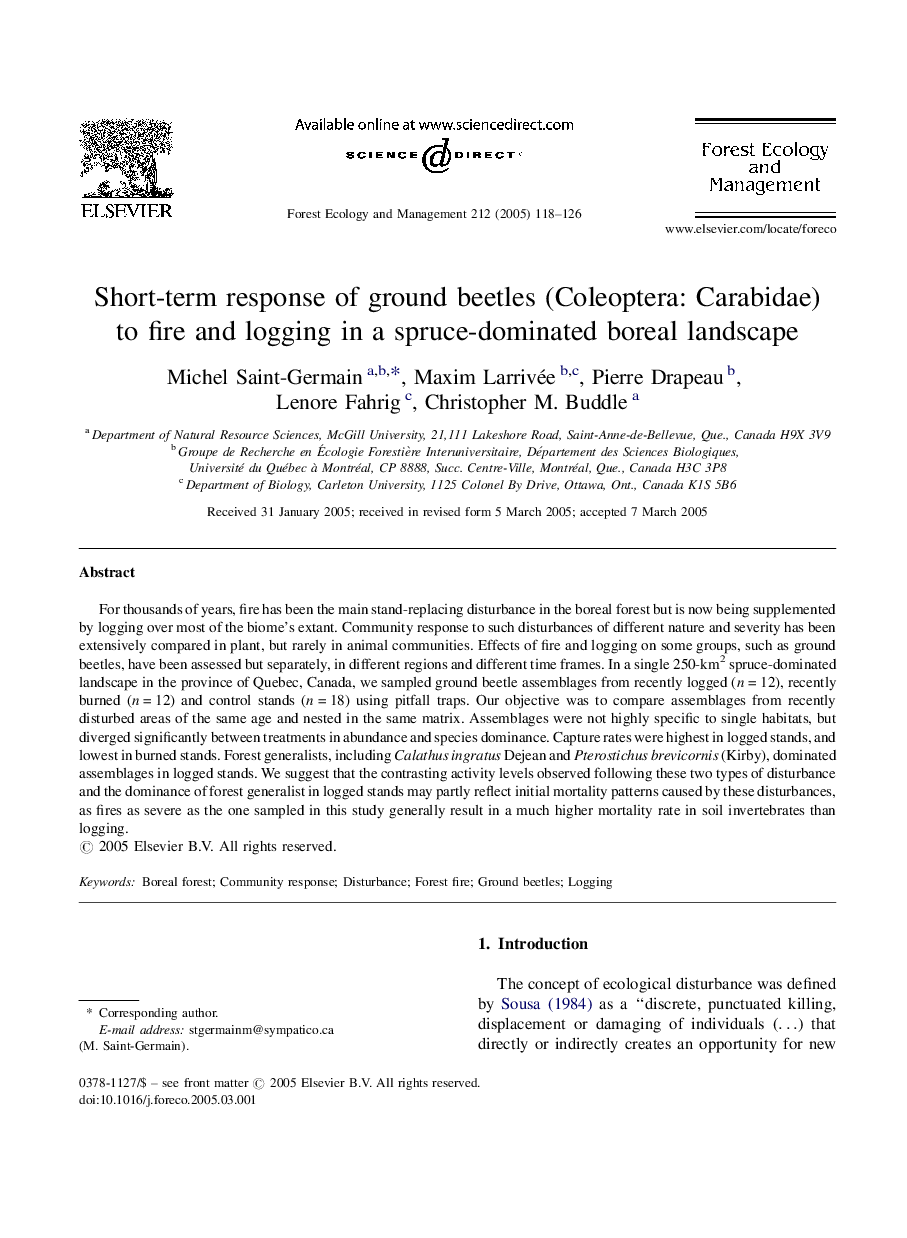| Article ID | Journal | Published Year | Pages | File Type |
|---|---|---|---|---|
| 9620303 | Forest Ecology and Management | 2005 | 9 Pages |
Abstract
For thousands of years, fire has been the main stand-replacing disturbance in the boreal forest but is now being supplemented by logging over most of the biome's extant. Community response to such disturbances of different nature and severity has been extensively compared in plant, but rarely in animal communities. Effects of fire and logging on some groups, such as ground beetles, have been assessed but separately, in different regions and different time frames. In a single 250-km2 spruce-dominated landscape in the province of Quebec, Canada, we sampled ground beetle assemblages from recently logged (n = 12), recently burned (n = 12) and control stands (n = 18) using pitfall traps. Our objective was to compare assemblages from recently disturbed areas of the same age and nested in the same matrix. Assemblages were not highly specific to single habitats, but diverged significantly between treatments in abundance and species dominance. Capture rates were highest in logged stands, and lowest in burned stands. Forest generalists, including Calathus ingratus Dejean and Pterostichus brevicornis (Kirby), dominated assemblages in logged stands. We suggest that the contrasting activity levels observed following these two types of disturbance and the dominance of forest generalist in logged stands may partly reflect initial mortality patterns caused by these disturbances, as fires as severe as the one sampled in this study generally result in a much higher mortality rate in soil invertebrates than logging.
Related Topics
Life Sciences
Agricultural and Biological Sciences
Ecology, Evolution, Behavior and Systematics
Authors
Michel Saint-Germain, Maxim Larrivée, Pierre Drapeau, Lenore Fahrig, Christopher M. Buddle,
